|
As we saw in our previous article Construction productivity, time is lost at every rest break and at the start and end of the shift. Project managers, foremen and supervisors must ensure that workers get to their work areas as quickly as possible and don’t start drifting off the job site before the start of the rest breaks and before the end of the shift. Construction workers will always take a chance unless working hours are enforced. The 5 minutes will become 10 minutes if nothing is said, and eventually 10 minutes becomes 15. Locating stores, offices and toilets close to the work areas helps minimise the lost time. Construction skillsA skilled construction worker is often more productive than a less skilled worker. How can you improve the skills of your crews? Well obviously employing a skilled person in the first place is a good start. It’s also important to train your team. This training can be in the form of on the job training and mentoring as well as more formal off-site training. I know we hate losing people for a few weeks while they’re at a training course, but almost always you will be rewarded with a more skilled and productive worker when they return. Motivating people is important. A demotivated crew could be 50% less productive than a motivated crew. Use the right toolsUsing the wrong construction tools, or construction equipment that is underpowered or too small for the job, means the task will take longer and the operator will be less productive. Using blades and drills which are blunt will be slower and risk damaging the equipment. Obviously construction equipment that frequently breaks down destroys productivity. Having insufficient tools or equipment may result in someone waiting for an item because someone else is using it. Of course, it may also be impractical for everyone to have their own machine. This would mean that there’re increased costs to purchase or hire the item, which will eventually be more than the potential savings which resulted from workers not waiting for the item. It’s a balance to maximise the productivity of both people and equipment. Planning and organising your construction siteOf course construction crews need to be balanced. So for instance, if there’re insufficient workers to fix the steel reinforcing in place, then this operation could go slower than other operations, which could then delay the following carpenters and concreters – making them less productive. If the access scaffolding isn’t in place in time, then the carpenters and the steel reinforcing fixers may be delayed. Work crews often wait for construction materials and equipment. Frequently materials have to be lifted in place with a crane. But cranes regularly have to be shared with other workers and other construction crews, even subcontractors sometimes. If one crew uses the crane longer than necessary because they weren’t prepared for the crane when it was their turn to use it, then it will impact others who are waiting to use the crane. It’s important to understand that if your crew uses the crane longer than they should, that this could impact another crew who is waiting to use the crane. Skilled workers are paid more than unskilled workers. Often unskilled workers can be used to undertake regulation tasks and help the skilled workers. This will result in the skilled workers achieving more production. Improving productivity on construction projectsProductivity on most construction projects is poor. It should be easy to improve productivity by 5 to 10%. Wages and salaries on most projects account for about 30% of the costs. If everyone is 10% more productive this could mean that the wages and salaries on the project are reduced by 10%, which overall is a saving of 3% for the project. A 3% saving might not sound much, but effectively this results in 3% more profit, which means if the project was priced to make 10% profit then the project potentially could make 13% profit. In effect the profit has increased by 30%. Now every manager would be very pleased to increase profits by 30%. But it’s often even possible to improve labour productivity by much more than 10%. Of course improving the productivity of construction workers has other benefits, which include that productivity of construction equipment increases, the project may be completed in a shorter duration, fewer workers may be required which will result in savings when the project is providing transport and accommodation for the workers, and fewer workers requires less personal protective equipment and company uniforms. Planning the construction project properly will improve productivity. This means ensuring that you have sufficient workers with the right skills. It includes seeing that your construction crews have the right equipment. That there is proper access to the work areas. That preceding work is completed so that the next tasks can be done. That all the required construction materials are available, including all the fixings to fit the items. Selecting the right construction methods can improve production. Good communication is essential to productivity. Workers that don’t know, or understand, what they should be doing may make mistakes, or they could waste time waiting for instructions or clarification of what to do. Sometimes it’s worth paying more for special equipment (such as specialist formwork) which will simplify tasks, speeding them up or reducing the number of people required. Where possible, don’t frequently move people from one task to another, since there’s lost time while they readjust to the new task. In our next articles we look at construction equipment productivity Do you want to learn how to manage construction projects successfullyPaul Netscher has written several easy to read books for owners, contractors, construction managers, construction supervisors and foremen. They cover all aspects of construction management and are filled with tips and insights.
Visit to read more. This article is an extract from the book 'The Successful Construction Supervisor and Foreman'. The books are available in paper and ebook from most online stores including Amazon. © 2020 This article is not to be reproduced for commercial purposes without written permission from the author. construction management construction project management
17 Comments
22/1/2021 09:47:14 pm
Great info. I like what you guys are up too.Great topic and information about concrete form contractors ma .It is surely a great content to use for future use. Thanks!
Reply
20/3/2021 12:12:08 am
I appreciated it when you shared that the crane is used to lift heavy materials from one place to another. However, it needs to be shared with several other workers if the company only has one. I would like to think if a company is working on a construction project, it should consider renting some cranes so the job can be done efficiently.
Reply
8/4/2021 07:19:43 am
I had no idea that cranes are shared between workers so they have to use them on time. That helps me plan for the future a lot better. Now I know to focus on allowing cranes the time they need to finish a project before anything else.
Reply
16/4/2021 06:53:19 pm
Thanks for sharing such a great information about improving construction productivity. Its really a great article, please keep sharing such information.
Reply
22/4/2021 02:39:40 am
I can see how a business could really benefit from getting the right constitution in order to be a lot safer. Making sure that they can get some help from a professional could allow them to be more effective. It was interesting to learn about how the profit can be increased by 30% when people are 10% more productive.
Reply
27/5/2021 09:42:12 am
I found it interesting when you said that tasks may take longer if the wrong tools are used in a construction project. My brother is planning to renovate his big beach house in July and is planning to purchase a crane. I guess I should tell him to consider crane hire to know if the machine can handle his construction needs so he doesn't have to buy one. He's also hoping to use a mini crawler crane to lift the heavy equipment in his garage.
Reply
30/6/2021 08:30:11 pm
I can see both sides of the argument when it comes to having insufficient equipment and enough for everyone to have their own. I lean more towards having more than enough of certain equipment. But larger tools and vehicles it is financially safer to have insufficient than to let it just sit there and waste money.
Reply
1/7/2021 03:40:42 pm
Excellent writing! We can take away a lot of important information from this article. Keep sharing great posts.
Reply
6/8/2021 07:44:04 pm
Should be shared with every construction manager instead of overworking their labors or employees.
Reply
17/12/2021 04:14:20 am
To create enough gross profit dollars to realize those goals, the company must improve its operational and job site productivity.
Reply
23/12/2021 04:41:28 am
But it’s often even possible to improve labour productivity by much more than 10%. Of course improving the productivity of construction workers has other benefits, Thank you, amazing post!
Reply
30/12/2021 03:55:02 am
Whether they are small-town contractors or multinational conglomerates, operate with a similar profit/productivity equation.
Reply
30/12/2021 01:11:12 pm
I never knew that project managers, foremen, and supervisors must ensure that workers get to their work areas as quickly as possible and don’t start drifting off the job site before the start of the rest breaks and before the end of the shift. I have no idea about it but now I think I do, it is really a good article. Thank you for the information about construction consulting.
Reply
11/2/2023 07:48:52 pm
I was researching about construction today and came across your website – great collection of high-quality articles.
Reply
14/1/2024 01:14:37 pm
Planning and communication play vital roles in construction site productivity. The emphasis on training, using the right tools, and organized project management provides valuable tips for improving efficiency.
Reply
Leave a Reply. |
Archives
June 2024
Note: We welcome genuine comments, especially comments that add additional information to the subject matter in the article. We however reserve the right to remove inappropriate comments, which includes comments that have nothing to do with the subject, comments that include inappropriate language, and comments that are an advertisement for a product or company, or which include an advertising link. Comments must be in English. We will not enter into discussion on why a particular comment was removed.
CategoriesCopyright 2016 - The attached articles cannot be reproduced for commercial purposes without the consent of the author.
The opinions expressed in the attached articles are those of the writer. It should be noted that projects are varied and different laws and restrictions apply which depend on the location of the contractor and the project. It's important that the reader uses the supplied information taking cognisance of their particular circumstances. The writer assumes no responsibility or liability for any loss of any kind arising from the reader using the information or advice contained herein. "I have what I consider some of the best books on construction management."
Books are available from: Amazon.com Amazon.co.uk takealot.com kalahari.com Amazon.in Amazon.de Amazon.fr Amazon.it Amazon.com.au Powell's Fishpond uread bokus Amazon.ca Amazon.es Other retail stores Available in paperback or on Kindle "28 YEARS OF CONSTRUCTION PROJECT MANAGEMENT EXPERIENCE, DEVELOPING SUCCESSFUL CONSTRUCTION PROJECT MANAGERS AND BUILDING SUCCESSFUL CONSTRUCTION COMPANIES"
|
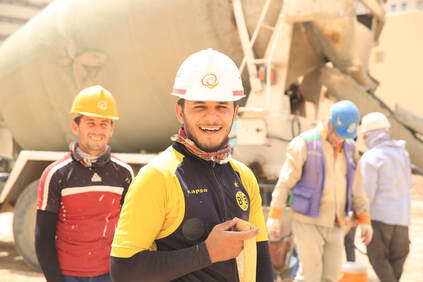
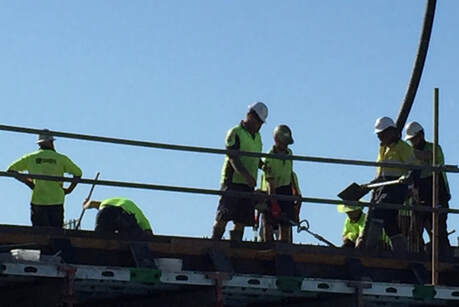
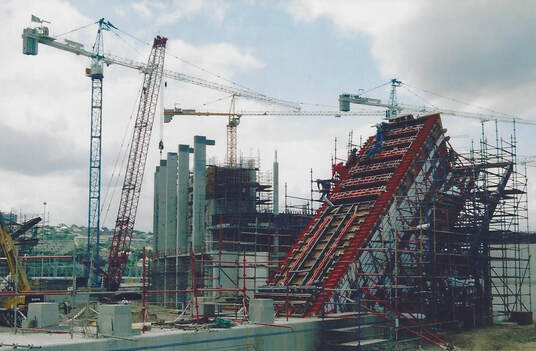
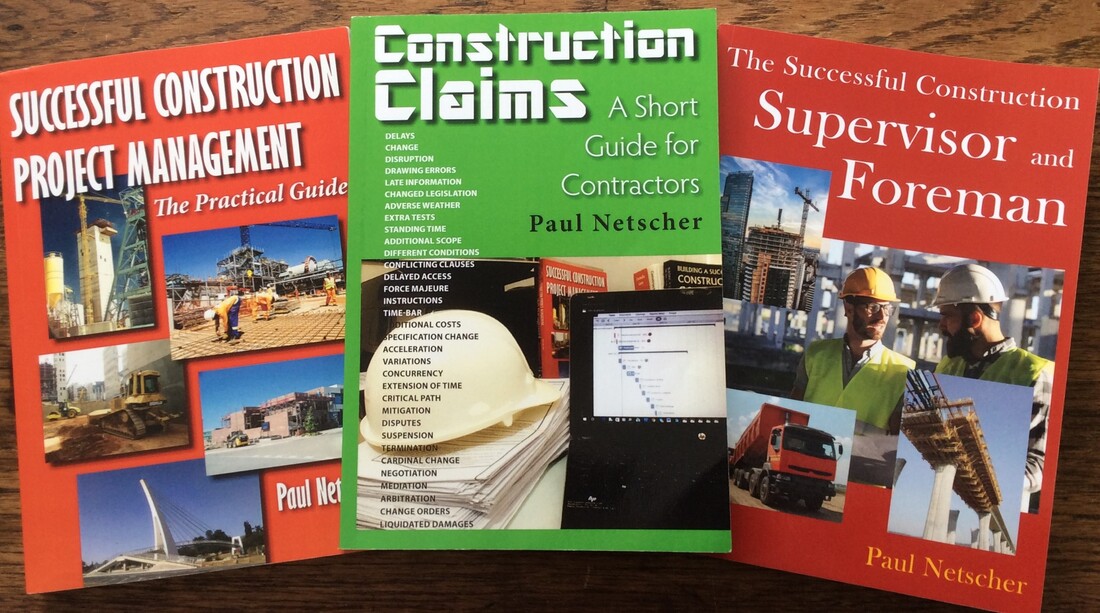
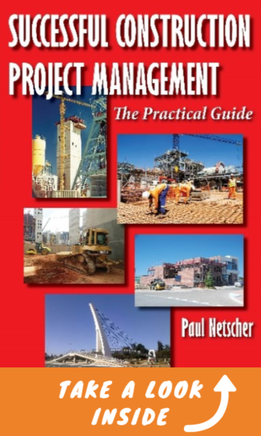


 RSS Feed
RSS Feed




